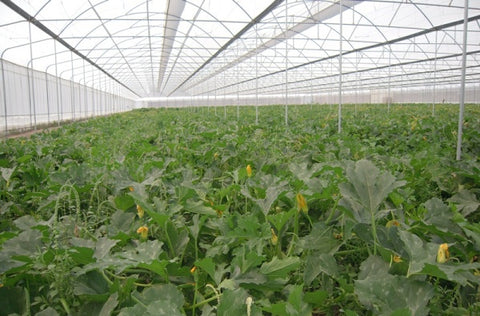Pumpkin Farming in Polyhouse for Double Profit
Are you looking to venture into the world of pumpkin farming? 🌾🎃 Look no further! In this post, we'll delve into the key aspects of profitable pumpkin cultivation, from planting to harvesting, and even touch on some valuable tips for maximizing your pumpkin yield. Let's dive in! 💪🌱
Introduction to Pumpkins 🎃 Pumpkins, those iconic symbols of fall and Halloween, are more than just decorations. Pumpkins are low in calories but rich in essential nutrients. They are a great source of vitamins and minerals such as vitamin A, vitamin C, potassium, and dietary fiber. The vibrant orange color of pumpkins is due to the presence of beta-carotene, a precursor to vitamin A.
Health Benefits of Pumpkin 🍂
- Rich Source of Vitamin 'A' and Potassium: Pumpkins are loaded with essential nutrients like Vitamin 'A' and potassium, supporting overall health.
- Antioxidant Properties: The antioxidants in pumpkins help combat oxidative stress and promote better health.
- Boosts Eye Vision: Thanks to their Vitamin 'A' content, pumpkins play a role in maintaining good eyesight.
- Aids in Better Sleep: Certain components in pumpkins may contribute to improved sleep quality.
- Lowers Blood Pressure: Incorporating pumpkins into your diet might have positive effects on blood pressure regulation.
Climate and Soil Requirements 🌡️🌱 
Pumpkins are well-suited for Indian climatic conditions, and their adaptability to varying temperatures and rainfall patterns makes them a desirable crop. Sandy loam soil enriched with organic matter and proper drainage is key to their successful cultivation. With proper soil preparation, irrigation, and attention to environmental conditions, farmers can optimize their pumpkin yield and quality.
Planting and Care 🌱🌦️
Pit Size and Spacing: Digging pits with a diameter of 60 cm and a depth of 30 to 45 cm provides ample space for the pumpkin roots to develop. Spacing the pits at 4.5 meters x 2.0 meters allows each pumpkin plant to have enough room to grow and spread.
Soil Preparation: Mixing well-rotted Farmyard Manure (FYM) and fertilizers with the topsoil in the pit ensures that the plants have access to essential nutrients for healthy growth.
Watering: Initial Growth: Watering every 3 to 4 days during the initial growth stage helps establish the young pumpkin plants and encourages root development.
Flowering and Fruiting: As the plants enter the flowering and fruiting stages, increasing the frequency of irrigation to every alternate day ensures that the developing fruits receive sufficient moisture for optimal growth and high-quality fruit.
Growth Time: Harvest Period: Pumpkins typically take around 3 to 4 months from the time of sowing seeds to the first harvest. This timeline can vary based on factors like climate, soil conditions, and pumpkin variety.
Maximizing Yield and Success 🌟
- Avoid Hybrid Seeds: opt for non-hybrid seeds for authentic pumpkin growth.
- Indoor Cultivation: Grow pumpkins indoors with proper care and conditions.
- Expert Tip: When growing in polyhouses, ensure you provide optimal conditions, lighting, and temperature for the best results.
Embark on your pumpkin farming journey armed with these techniques, and watch your efforts yield beautiful harvests! 🌱🎃 Share your pumpkin success stories and let's cultivate a pumpkin-rich future together! 🌾👨🌾👩🌾 #PumpkinProsperity #FarmToFork #HealthyHarvest




Leave a comment